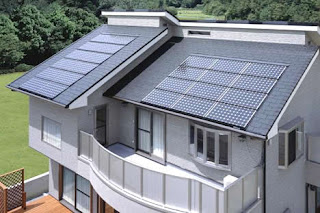High installation costs

Many people consider the initial costs of purchasing and installing equipment to be the most significant solar energy disadvantage.
Whilst the use of solar energy will undoubtedly save money over time, it does involve a significant capital outlay at the outset.
The installation of a photovoltaic system to provide electricity for a 3-bedroom home costs from $12,000 to $30,000 before government rebates and tax credits. Even a less ambitious solar water heating system costs from $3,000 to $5,000.
These are significant amounts that will discourage many from investing in renewable energy sources such as solar power.
Luckily for us, there are now do-it-yourself guides with instructions on how to fabricate solar panels for less than $200. One of the best examples can be found here. Thousands of families have already built their own solar energy plants today using these simple to follow guidelines.
Space requirement for the solar panels and/or solar collectors
One solar energy disadvantage that can not be overcome is the space required to install solar panels and/or solar collectors. Solar panels or solar collectors can take up hundreds of square feet of roof or backyard space which is clearly going to be a major problem in confined inner city areas.
Solar energy can not be captured every day and everywhere
Solar energy can only be exploited when the sun is shining and its energy can be captured. Unfortunately, the amount of sunlight that arrives at the earth’s surface is not constant. It depends on location, time of day, time of year, and weather conditions. Even the most hi-tech solar equipment will be useless at night and perform poorly when it is overcast. If you live in a region where sunshine is limited it will be difficult to produce a constant supply of solar energy.
Energy costs and the pollution from manufacturing solar energy systems
We have been conditioned to believe that solar energy is clean and green. However, a solar energy disadvantage that you should be aware of is that manufacturing solar panels contributes to greenhouse emissions. It takes power to produce solar cells, and this energy is usually produced using fossil fuels like oil or coal. Like it or not, the manufacture of solar cells and the other components of solar energy systems depends on the use of non-renewable fossil fuels which contribute to carbon emissions and lobal warming. Solar energy may be clean and green but the equipment required to harness it is not.
 Many people consider the initial costs of purchasing and installing equipment to be the most significant solar energy disadvantage.
Many people consider the initial costs of purchasing and installing equipment to be the most significant solar energy disadvantage.